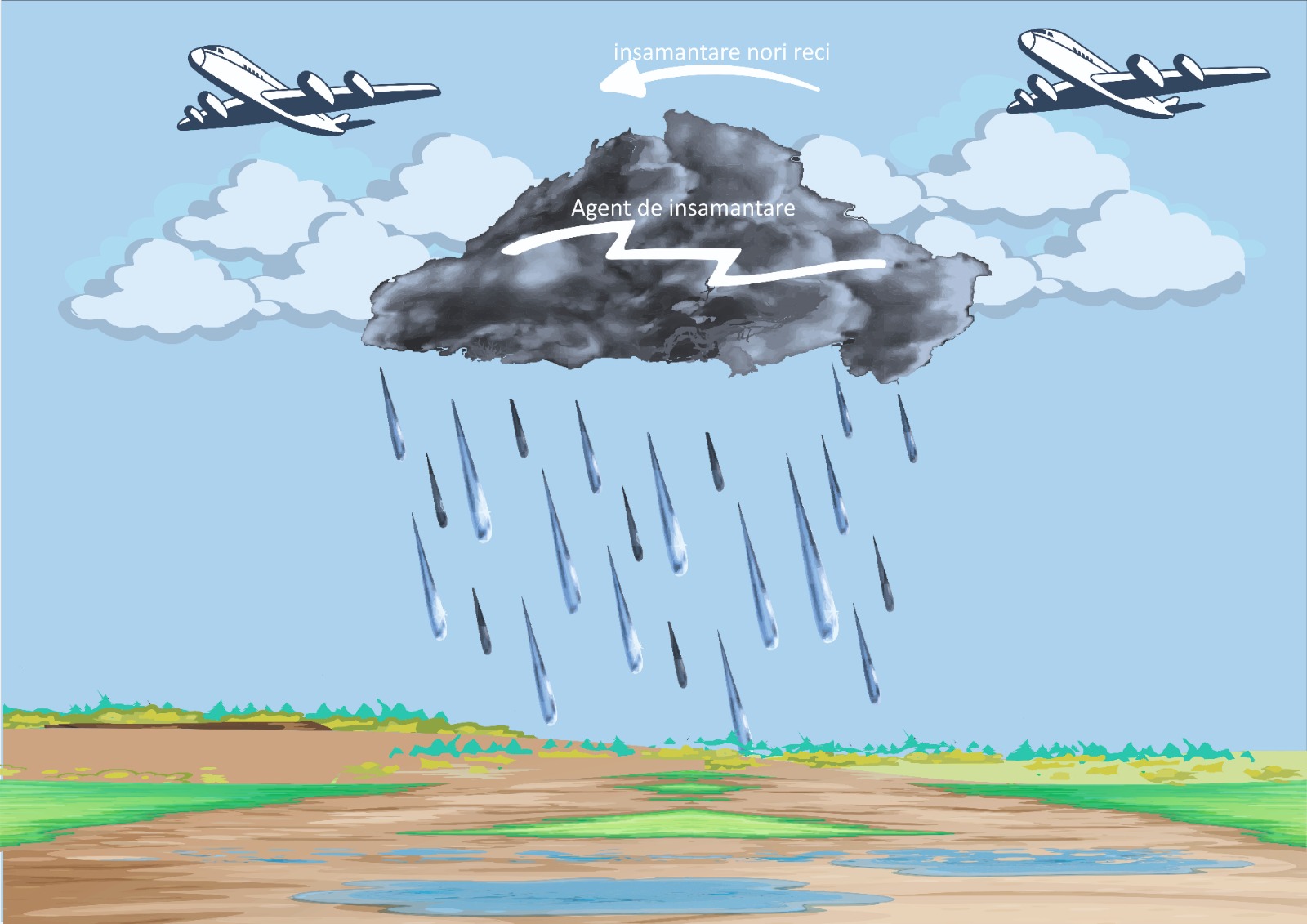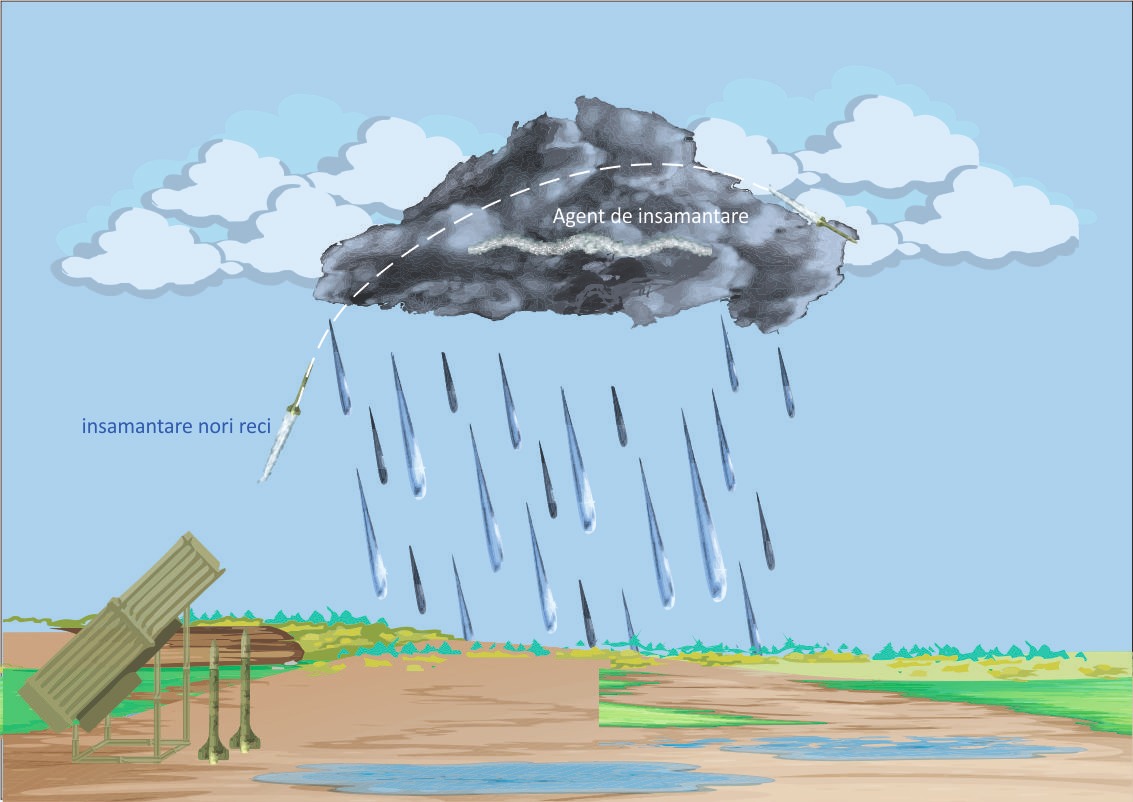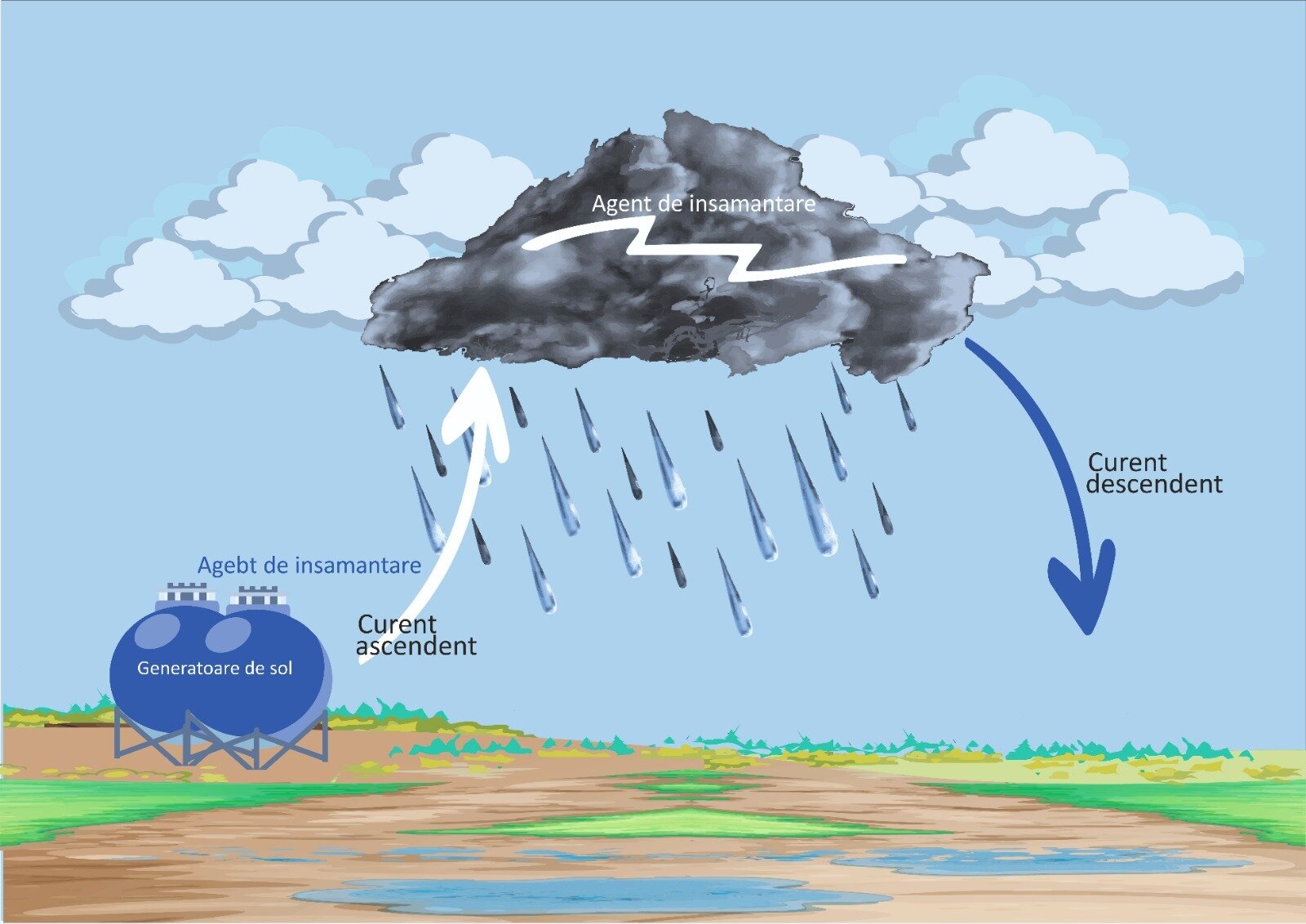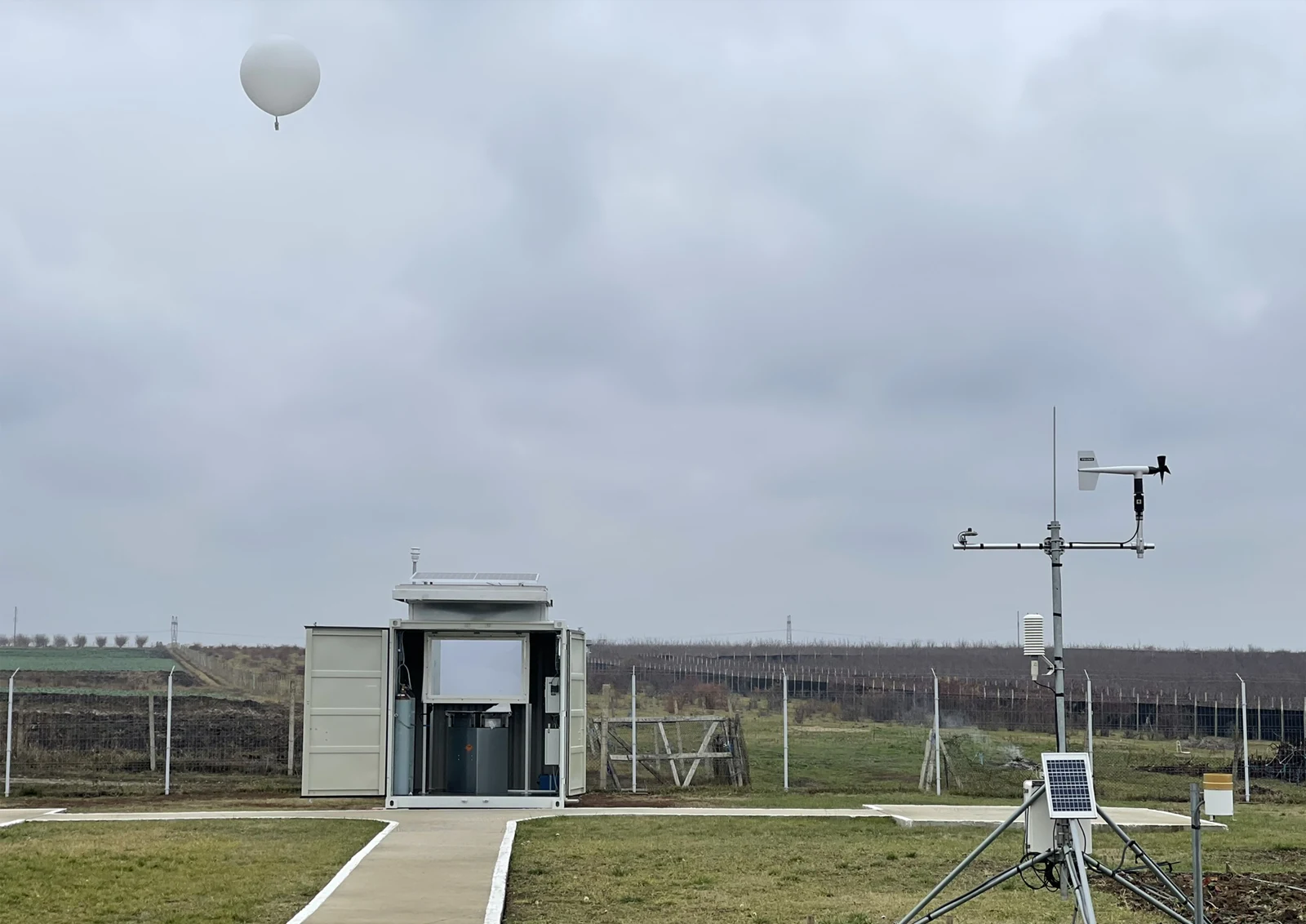
ACTIVE INTERVENTIONS IN THE ATMOSPHERE USING AVIATION
ACTIVE INTERVENTIONS IN THE ATMOSPHERE USING AVIATION
The use of aircraft for active response operations in the atmosphere involves modifying them to be able to transport response materials to the cloud target areas. By conducting experiments over the last few years, we want to implement this method in as many areas as possible throughout the country. It is among the most effective cloud seeding methods available.
Depending on the type of aircraft and the type of active intervention in the atmosphere, aircraft are adapted to carry smoke torches on the wings and ejectable cartridges on the underside. Thus, interventions on cloud systems to stimulate rainfall and combat hail using aircraft are carried out by two methods:
- seeding the top of the cloud by direct injection of crystallization nuclei
- seeding the base of the cloud by dispersing the condensation nuclei in the hot part.
Aircraft crews need to collaborate effectively with operational meteorologists on the ground, given the limited information generated by aircraft radar compared to the detailed, comprehensive view of clouds generated by ground-based radars. During the warm season, convective systems can develop rapidly and strongly, requiring vigilance on the part of both teams. The safety of our stakeholders is our highest priority.
In the case of interventions in the upper cloud area, it is the ground meteorologist who indicates to the aircraft the area where the seeding material should be released. For interventions at the base of the cloud, the pilot decides to position the aircraft near the intervention area in order to carry out the operation safely. Communication between all team members is essential.
Because of the unpredictability of the evolution and the high speed with which flight conditions change, especially in the warm season, this method presents a high degree of risk, the personnel involved must be trained, the equipment must be efficient and the meteorologists must be very well trained. This is an effective method for both combating hail and stimulating rainfall.
ACTIVE INTERVENTIONS IN THE ATMOSPHERE USING ROCKETS

ACTIVE INTERVENTIONS IN THE ATMOSPHERE USING ROCKETS
Active interventions in the atmosphere using hail rockets are one of the most effective methods of intervening on hail-generating cloud systems. This approach involves the use of rockets that disperse silver iodide on their upward trajectory in a continuous and uniform manner over a well-defined time interval.
The anti-hail rockets used in these interventions are specially designed to carry the seeding material to the target area in the cloud.
This method of intervention can be defined as a complex system, and a sufficiently large number of Launch Points is required for optimal coverage of a protection area.
Active atmospheric interventions on cloud systems to combat hail falls using specialised rockets are used successfully in several countries. This method has been successfully used for a long time in: Moldova, Georgia, Bulgaria, Serbia, Croatia, Slovenia, China, Argentina, Brazil and the Russian Federation.
In recent decades, as climate change has intensified, both scientists and farmers are increasingly opting for active interventions using the rocket method. Not only does it help to increase rainfall, but it also helps to reduce the devastating effects of hail and has a positive impact on agriculture, especially when it comes to crop protection.
ACTIVE INTERVENTIONS IN THE ATMOSPHERE USING LAND-BASED GENERATORS

ACTIVE INTERVENTIONS IN THE ATMOSPHERE USING LAND-BASED GENERATORS
The ground generator method for active atmospheric intervention is a complex method and requires careful selection of positions and number of generators to protect a given area of interest. To implement such a system, numerous studies are required prior to design.
Land-based generators used in active atmospheric interventions operate with a mixture of substances, which maintain their physical and chemical properties throughout the temperature range in which they produce aerosols containing silver iodide.
The effectiveness of ground generators in dispersing seed material to the target area within the cloud is limited. The best results are obtained in active interventions in the atmosphere to increase the amount of precipitation, especially in mountain regions where ground temperatures are already close to the optimal range. In some cases, these areas are practically inside the clouds.
Under conditions different from those mentioned above, when land-based generators are used, aerosols are produced close to the earth's surface and not in or near clouds. These aerosols are then entrained in the atmosphere by updrafts and reach the target area in the cloud.
This type of intervention is much less efficient than using missile systems or aircraft, but has advantages in terms of operating costs. Another advantage of this method is the ease with which the generators can be controlled remotely and also does not require airspace restriction when in use.
A more effective approach to hail control using this method is to disperse artificial condensation nuclei (silver iodide) long before the convective system reaches the area, which is a preventative method of hail control and also stimulates rainfall.
Atmospheric turbulence and convection phenomena can transport these condensation nuclei from near land generators into convective clouds, up to the level where ice nucleation occurs. This process leads to a decrease in hail size. However, the method does not provide a guarantee as to the exact area where the condensation nuclei will arrive, as they can be influenced by atmospheric conditions and cloud movement.
Active interventions in the atmosphere using Helium Balloons

ACTIVE INTERVENTIONS IN THE ATMOSPHERE USING HELIUM BALLOONS
In addition to the methods outlined above, we have integrated cloud seeding using helium balloons into our active atmospheric intervention system.
Cloud seeding technology for rainfall stimulation and hail control using helium balloons is a safe and automated method that allows both efficient and rapid intervention. Their release can be controlled manually or remotely, and once done, dispersal of the seeding agent will occur in less than 10 minutes.
The balloon is made of biodegradable latex, resulting in little or no environmental impact. Inside, it contains 1m cubic metre of helium and an electronic control system, whose functionality is to ignite the cartridge, which in turn can contain a charge of 23g silver iodide or 220g sodium chloride.
This technology is suitable for both cold season stratiform cloud formations and warm season convective cloud formations. After completing its mission, the balloon self-destructs by activating a heat source, which creates a hole in the balloon, causing it to fall to the ground.
What are the advantages of using helium balloons to actively intervene? The intervention material can be spread at an altitude within a flexible range compared to previous methods. At the same time, the seeding material hooked onto the bubble can easily be changed.
It is important to note that this type of intervention is effective in thermal inversion conditions or when isothermal levels are low, when other methods cannot be used.